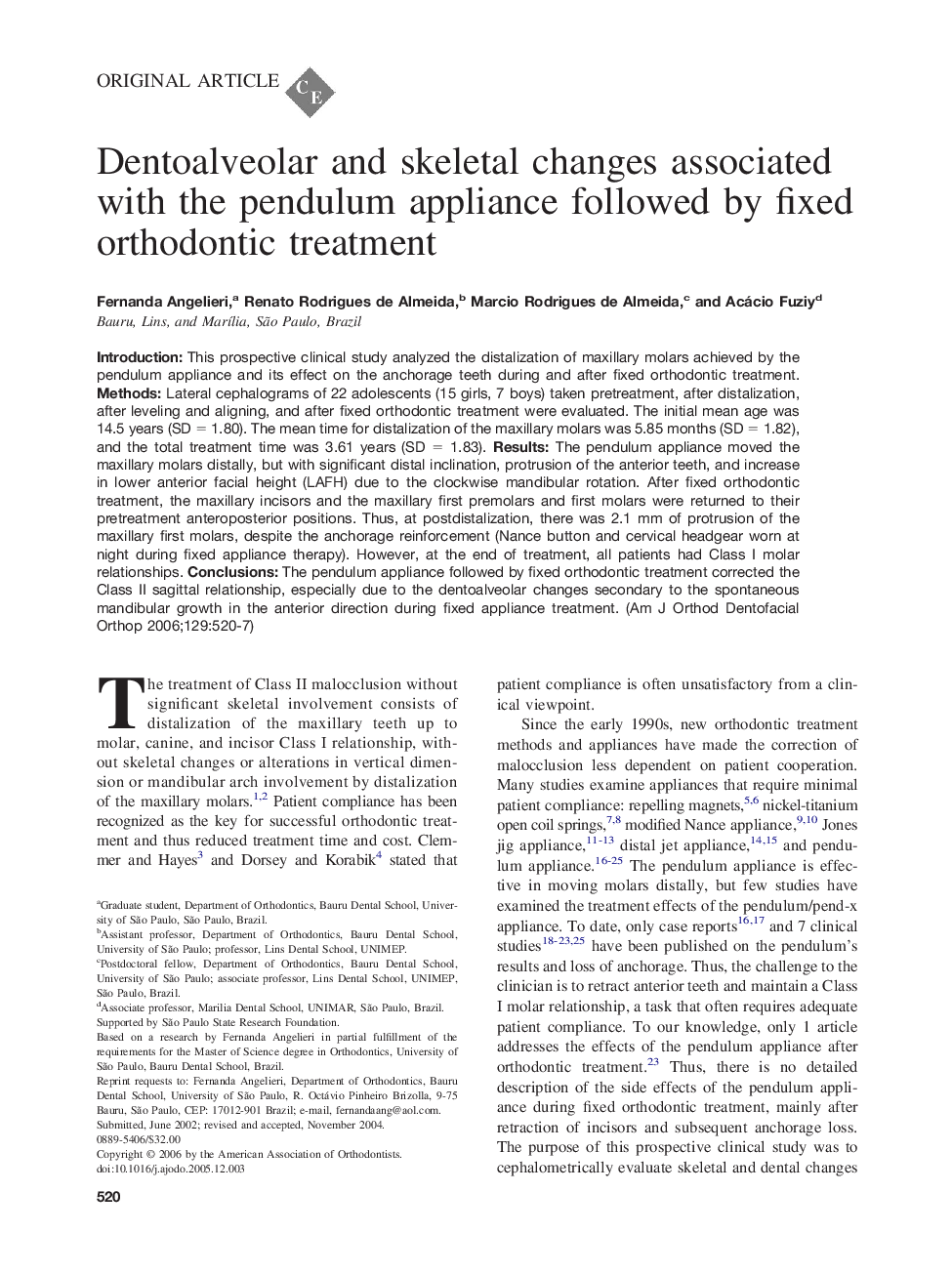| Article ID | Journal | Published Year | Pages | File Type |
|---|---|---|---|---|
| 3120501 | American Journal of Orthodontics and Dentofacial Orthopedics | 2006 | 8 Pages |
Introduction: This prospective clinical study analyzed the distalization of maxillary molars achieved by the pendulum appliance and its effect on the anchorage teeth during and after fixed orthodontic treatment. Methods: Lateral cephalograms of 22 adolescents (15 girls, 7 boys) taken pretreatment, after distalization, after leveling and aligning, and after fixed orthodontic treatment were evaluated. The initial mean age was 14.5 years (SD = 1.80). The mean time for distalization of the maxillary molars was 5.85 months (SD = 1.82), and the total treatment time was 3.61 years (SD = 1.83). Results: The pendulum appliance moved the maxillary molars distally, but with significant distal inclination, protrusion of the anterior teeth, and increase in lower anterior facial height (LAFH) due to the clockwise mandibular rotation. After fixed orthodontic treatment, the maxillary incisors and the maxillary first premolars and first molars were returned to their pretreatment anteroposterior positions. Thus, at postdistalization, there was 2.1 mm of protrusion of the maxillary first molars, despite the anchorage reinforcement (Nance button and cervical headgear worn at night during fixed appliance therapy). However, at the end of treatment, all patients had Class I molar relationships. Conclusions: The pendulum appliance followed by fixed orthodontic treatment corrected the Class II sagittal relationship, especially due to the dentoalveolar changes secondary to the spontaneous mandibular growth in the anterior direction during fixed appliance treatment.
